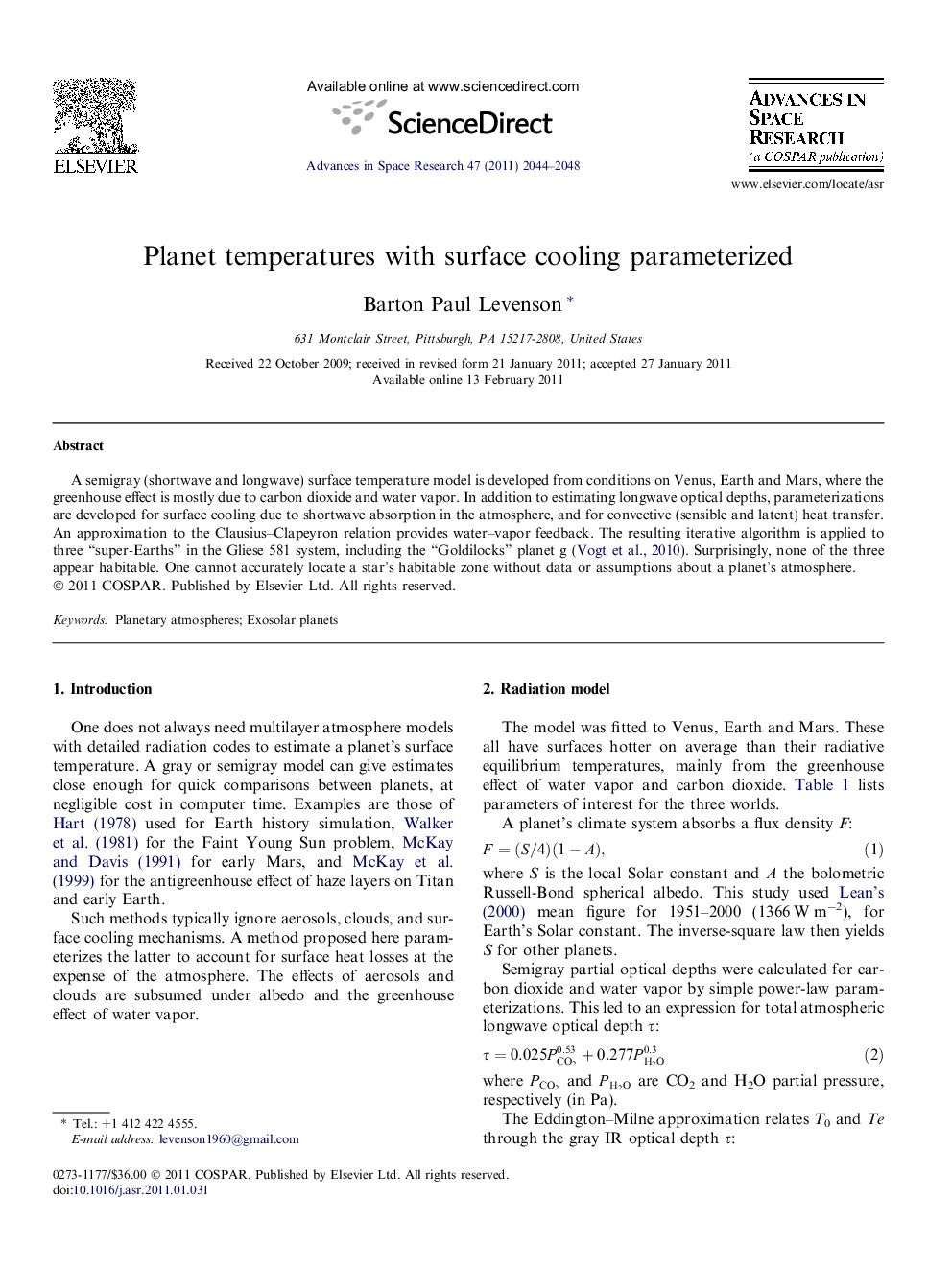| کد مقاله | کد نشریه | سال انتشار | مقاله انگلیسی | نسخه تمام متن |
|---|---|---|---|---|
| 1766709 | 1020161 | 2011 | 5 صفحه PDF | دانلود رایگان |

A semigray (shortwave and longwave) surface temperature model is developed from conditions on Venus, Earth and Mars, where the greenhouse effect is mostly due to carbon dioxide and water vapor. In addition to estimating longwave optical depths, parameterizations are developed for surface cooling due to shortwave absorption in the atmosphere, and for convective (sensible and latent) heat transfer. An approximation to the Clausius–Clapeyron relation provides water–vapor feedback. The resulting iterative algorithm is applied to three “super-Earths” in the Gliese 581 system, including the “Goldilocks” planet g (Vogt et al., 2010). Surprisingly, none of the three appear habitable. One cannot accurately locate a star’s habitable zone without data or assumptions about a planet’s atmosphere.
Journal: Advances in Space Research - Volume 47, Issue 11, 1 June 2011, Pages 2044–2048